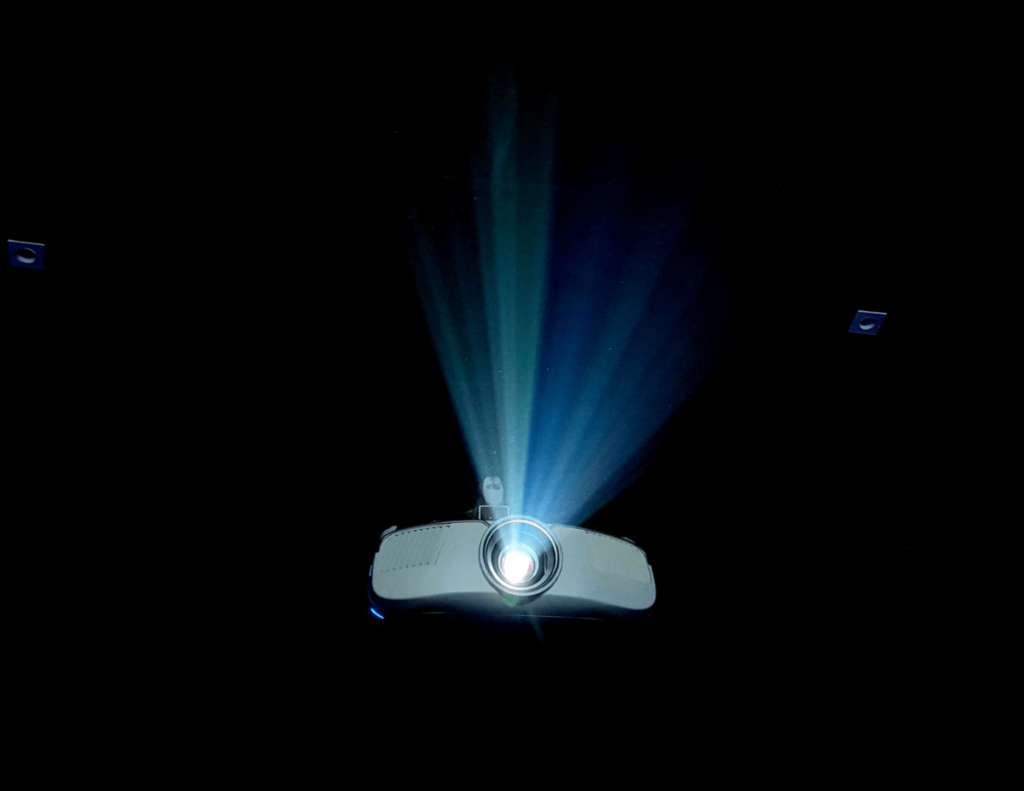Last Updated on July 10, 2024 by Admin
When selecting a projector, brightness is the most important factor. In our previous article, we discussed what are Lumens, and why they are chosen to measure brightness over other metrics. However, when discussing projectors, ANSI Lumens are more crucial than regular lumens. So, What is ANSI Lumens? Let’s find out.
This article delves into the definition, measurement, and importance of ANSI Lumens, providing a comprehensive understanding for consumers and enthusiasts alike. Knowing What are ANSI Lumens will help you pick the best projector and make a smart choice.
Page Contents
What is ANSI Lumens?
ANSI stands for American National Standards Institute, an organization that sets standards across various industries. Different metrics exist for measuring light source brightness, each with its own methodology. ANSI Lumens, however, stands out due to its unique calculation method, making it a crucial, reliable, and dependable factor in measuring projector brightness.
ANSI Lumens Definition
ANSI Lumens is a standardized measure of brightness for projectors, established by the American National Standards Institute. It quantifies how much light a projector emits across its screen, with higher ratings indicating brighter output. This standardization ensures that the brightness measurement is accurate and consistent.

ANSI Lumens vs. Other Brightness Measures
The factor that differentiates ANSI Lumens from other brightness measures lies in its method of measurement. We have explained the differences in detail in another article.
Check out Ansi Lumens Vs ISO Vs Led Lumens here.
How ANSI Lumens are Measured
To understand the importance of ANSI Lumens, it’s important to know how they are measured. The measurement process involves the following steps:
Step 1: The projector is placed in a darkened room with a specific screen size and distance.
Step 2: A white image is projected onto the screen, ensuring the image covers the entire screen uniformly.
Step 3: The screen is divided into nine equal sections, forming a 3×3 grid, with a measuring device placed at the center of each section. (As you can see in the infographics)

Step 4: The Brightness at each section is measured and calculated to take out the average by summing the readings and dividing by 9. This average reading represents the ANSI Lumens rating of the projector.
This method is considered superior to others because alternative brightness measurement methods typically only gauge brightness at the screen’s center, resulting in inconsistent readings.
The average brightness calculated from all nine sections provides a standardized representation of the projector’s brightness output. Therefore, ANSI Lumens are more critical than regular lumens and other measurement metrics, particularly in the context of projectors.
Therefore, don’t be misled by higher lumen values in projector specifications alone. It’s also essential to check the ANSI Lumens rating to ensure you understand the projector’s actual brightness capability.
Importance of ANSI Lumens:
The primary reason ANSI Lumens are important and preferred over other measurement metrics is due to their method of calculation. Here are a few reasons why this is crucial:
1. Consistency:
ANSI Lumens ensures that brightness measurements are consistent across different projector models and brands. This consistency allows consumers to compare projectors accurately and select one that best suits their needs.
2. Accuracy:
The ANSI Lumens method measures brightness by taking multiple readings from various parts of the screen, ensuring an accurate assessment of the projector’s performance.
3. Relevance:
Users can determine their required ANSI Lumens based on their lighting conditions and environment, which is crucial for presentations, home theaters, and outdoor setups.
Real-Life Example:
Once, we were evaluating two Projectors for our home theater. Projector A was advertising 5000 Lumens, while Projector B was advertising 4000 ANSI Lumens.
Now, someone, who doesn’t know What is ANSI Lumens, or the distinction between Lumens and ANSI Lumens would likely choose Projector A.
We tested both Projectors in a well-lit room. Projector A, with its 5000 Lumens specification, appears brighter at the center of the screen but noticeably dimmer towards the edges due to uneven light distribution. In contrast, Projector B, with its 4000 lumens rating, displayed a consistently bright image across the entire screen.
So, we were curious about Projector A’s actual performance and decided to measure its ANSI lumens using the standardized method. After testing, we discovered that Projector A’s ANSI lumens rating was 3200, which was lower than Projector B’s.
This is because ANSI Lumens measurements consider the average brightness across multiple points on the screen, providing a more accurate representation of the projector’s actual performance in real-world conditions.
This example demonstrates that while the lumens specification of 5000 suggests high brightness, the actual ANSI lumens measurement of 3200 reflects the projector’s true brightness output across the entire screen.
This example highlights how Lumens specifications alone can be misleading, and shows the importance of ANSI lumens in accurately assessing a projector’s performance in real-world conditions.

Practical Implications for Consumers
Understanding ANSI Lumens is essential for making the right purchasing decisions. When shopping for a projector, it’s important not only to consider Lumens but also to look for the ANSI Lumens rating to ensure you get an accurate measure of brightness.
Here are a few tips:
- Check the Rating: Always check the ANSI Lumens rating on the projector specifications. Higher ANSI Lumens mean brighter projectors, which are better suited for well-lit environments.
- Consider the Environment: Don’t solely opt for a projector with a high ANSI Lumens rating. Choose the number of lumens based on your environment and intended use. For dark home theaters, 1000-1500 ANSI Lumens might be sufficient, while brighter rooms may require more than 3000 ANSI Lumens.
- Compare Models: When comparing projector models, the primary consideration should be ANSI Lumens, in addition to factors like light source, resolution, and others.
You can also check out this article on How Many Lumens for Outdoor Projector?
Future of ANSI Lumens
As technology advances, methods for measuring brightness are also evolving. Previously, people assumed that watts determined brightness, but watts only measure energy consumption.
Later, lumens became the unit used to measure the brightness of a light source. However, lumens only measure the brightness emitted from the light source.
ANSI Lumens, on the other hand, measures the brightness across multiple points on the screen and then calculates the average. Even in the future, ANSI Lumens is likely to remain a crucial aspect of projector specifications.

Final Words:
In conclusion, ANSI Lumens is one of the most crucial specifications of a projector. Understanding What are ANSI Lumens can help you choose the best projector for your home theater.
ANSI Lumens provides a standardized, reliable, and accurate measure of brightness, enabling consumers to make informed decisions. Whether for a home theater, business presentation, or outdoor event, knowing the ANSI Lumens rating helps you select a projector suitable for your environment.
As we mentioned before, having high lumens is not always better. Excessive brightness can cause the image to appear washed out and may also lead to eye strain. Therefore, you should always choose a projector with the necessary ANSI Lumens to ensure an optimal visual experience.
If this article helped you understand What is ANSI Lumens and its importance for projectors, don’t keep it to yourself! Share it with your friends, family, and colleagues who are also in the market for a projector. By spreading the knowledge, you can help others make informed decisions and find the perfect projector for their needs. So, click the share buttons and let others benefit from these insights!

